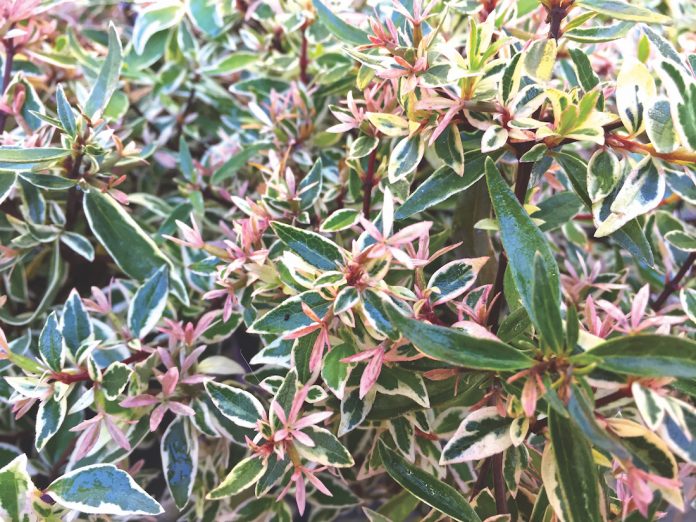By this time of the year, you probably have planted some new perennials for color in your garden. But if you look around and still feel something is missing the answer may be that your landscape needs more than color. As a landscape designer, I am often called upon for ideas to create richer landscapes that provide four seasons of interest. Here are some tips I pass along.
A more sophisticated appeal and enduring quality in your landscape can be achieved if foliage color is used to complement, or contrast with, other plants within the design. This technique unifies the overall look while offering appeal throughout the season. One plant that would make this happen is Rose Glow Japanese barberry. Their graceful habit with slender, arching branches makes a statement by itself but it’s the vivid marbled red and pinkish foliage that steals the show until they deepen to rose and bronze with age. In the fall, the foliage turns yellow-orange before dropping and bead-like bright red berries stud the branches fall through winter.
Abelia Confetti is another small shrub that can be used to unify your landscape. Growing only 2-3 feet high and 4-5 feet wide with variegated eaves and their foliage turning maroon in cold weather. Abelia is an adaptable plant, useful in shrub borders, near the house, or as a groundcover on banks. White, bell-shaped flowers are plentiful and showy during summer and early fall.
Texture in foliage is very important in good garden design. Varying the size and shape of leaves creates diversity and variety among neighboring plants. Striking visual interest can even be achieved when working with two different plants with similar shades of green.
An example of this would be combining Gold Star pittosporum tenuifolium with grevillea noellii. The first has dark green oval foliage on 10-15-foot tall dense plants while the latter is clad with narrow inch-long glossy green leaves. Clusters of pink and white flowers bloom in early into late spring and are a favorite of hummingbirds.
Using the same plant shape throughout a landscape can create rhythm, balance and harmony and tie the entire design together. Forms and shapes of plants and trees can be columnar, conical, oval, round, pyramidal, weeping, spreading and arching. A loropetalum with its spreading tiers of arching branches could be repeated throughout your garden to create visual interest and balance. A dogwood tree could also repeat this same form as its branches grow horizontally.
Consider also layering plants to create a beautiful garden. From groundcovers all the way up to the tallest tree, natural-looking designs mimic nature.
Don’t forget about focal points. This could be a Japanese maple cloaked by a wall of dark evergreens or a statue or pottery at the end of a long, narrow pathway. Focal points draw attention and even distract the eye from an unsightly view.
There are many solutions to make your garden complete. Consider using some of the above design elements to make your landscape beautiful.
Jan Nelson, a landscape designer and California-certified nursery professional, will answer questions about gardening in the Santa Cruz Mountains. Email her at ja******@*ol.com, or visit jannelsonlandscapedesign.com.









